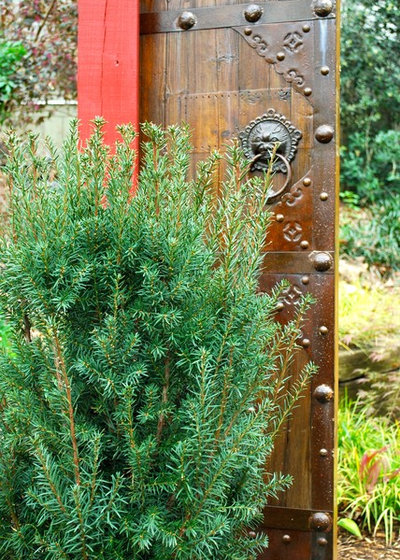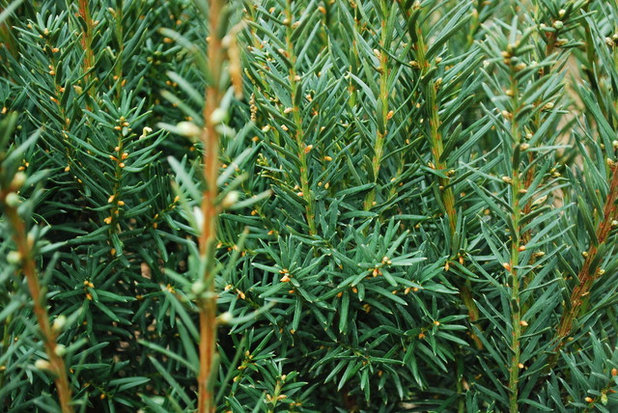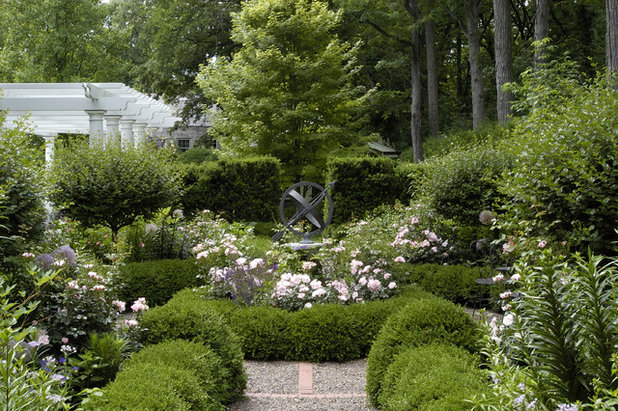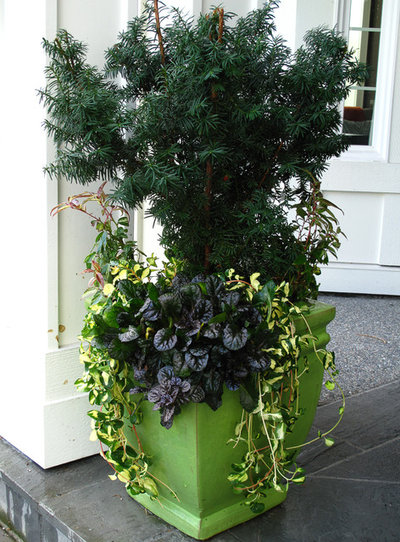Spring brings out our impulsiveness. After a long, cold, dreary winter, the brightly colored frilly plants that earn their spot on center stage at the garden center flirt with us as we yearn for longer, warmer spring days. It is now that the darker green utilitarian plants take a backseat to the new and sensational.
The truth is that without these workhorses of structure, the frilly and fleeting annuals and perennials wouldn’t shine nearly as brightly. And sometimes we need a columnar plant to juxtapose a horizontal composition. Meet Hicks yew (
Taxus x
media ‘Hicksii’).

Jay Sifford Garden Design
Botanical name: Taxus x
media ‘Hicksii’
Common name: Hicks yew
Origin: Hybrid of Japanese yew and English yew
Where it will grow: Hardy to -30 degrees Fahrenheit (USDA zones 4 to 7; find your zone)
Light requirement: Full sun to partial shade
Water requirement: Average, well-drained soil
Mature size: Up to 10 feet tall and 4 feet wide
Benefits and tolerances: Tolerant of pollution and salt air, so it’s a good choice for coastal areas; tolerant of partial shade; performs better than most conifers when sheared into a hedge; can be prone to deer damage in some areas; more insect resistant than popular arborvitae
Seasonal interest: Its consistent dark green color provides a good backdrop for other plants with seasonal interest.
When to plant: Spring or fall

Jay Sifford Garden Design
Distinguishing traits. Hicks yew is a columnar evergreen that requires no pruning to maintain a compact, tidy shape.

Schmechtig Landscapes
How to use it. Traditionally, upright yews, such as Hicks, were planted in hedgerows and pruned into boxes, making effective walls for garden rooms. Its tight, columnar shape makes Hicks a perfect choice for defining paths between garden rooms and for planting next to porch columns to mimic the shape and make a meaningful connection between house and garden.
Shown: Hicks yew in the middle ground with Bonica roses and Green Velvet boxwood (
Buxus ‘Green Velvet)

Deborah Silver and Co Inc
Yew hedges are finding their well-deserved place in contemporary gardens as well. Here, Hicks yew forms a backdrop to show off the seasonal color of switchgrass (
Panicum virgatum, zones 4 to 9). This contrast in styles adds another layer of interest.

Le jardinet
Hicks yew is also useful as a container plant. Its structural form and dark green color allow flashier annuals to stand out.
Planting notes. Plant Hicks yew in average, well-drained soil in full sun to partial shade. To create a hedge, space plants 6 feet on center.





